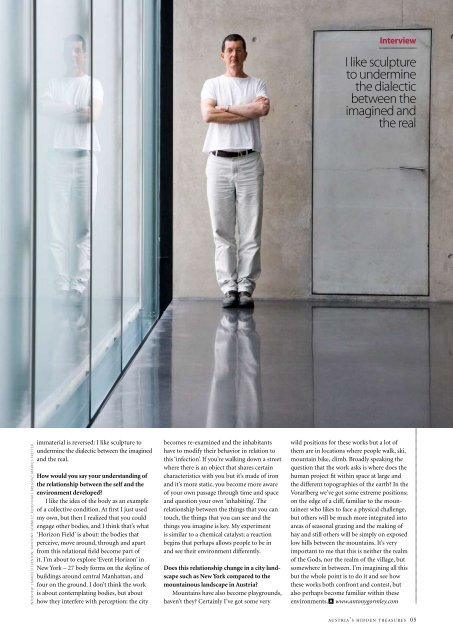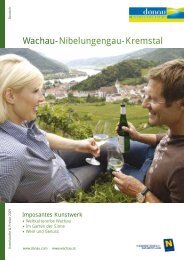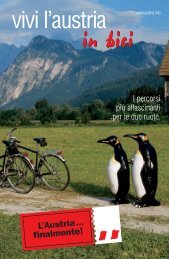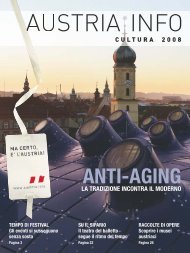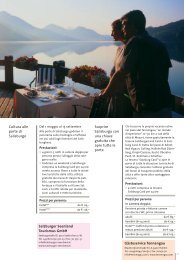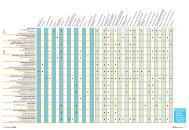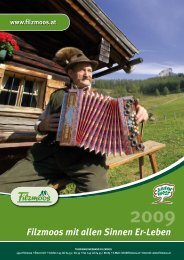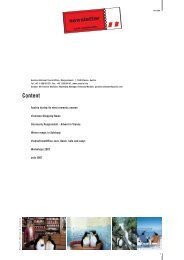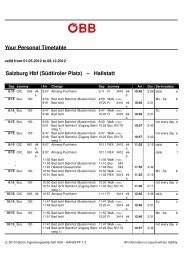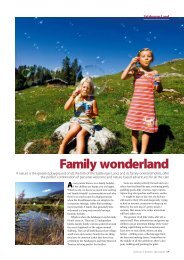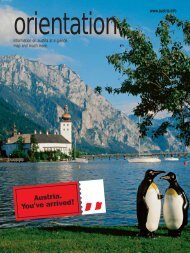Antony Gormley: Britain's greatest sculptor comes to Austria
Antony Gormley: Britain's greatest sculptor comes to Austria
Antony Gormley: Britain's greatest sculptor comes to Austria
Create successful ePaper yourself
Turn your PDF publications into a flip-book with our unique Google optimized e-Paper software.
INTERVIEW: LAUREN STEVENTON; ©ANTONy GORmLEy, KUNSThAUS BREGENz; mARKUS TRETTER<br />
immaterial is reversed: I like sculpture <strong>to</strong><br />
undermine the dialectic between the imagined<br />
and the real.<br />
How would you say your understanding of<br />
the relationship between the self and the<br />
environment developed?<br />
I like the idea of the body as an example<br />
of a collective condition. At first I just used<br />
my own, but then I realized that you could<br />
engage other bodies, and I think that’s what<br />
‘Horizon Field’ is about: the bodies that<br />
perceive, move around, through and apart<br />
from this relational field become part of<br />
it. I’m about <strong>to</strong> explore ‘Event Horizon’ in<br />
New York – 27 body forms on the skyline of<br />
buildings around central Manhattan, and<br />
four on the ground. I don’t think the work<br />
is about contemplating bodies, but about<br />
how they interfere with perception: the city<br />
be<strong>comes</strong> re-examined and the inhabitants<br />
have <strong>to</strong> modify their behavior in relation <strong>to</strong><br />
this ‘infection’. If you’re walking down a street<br />
where there is an object that shares certain<br />
characteristics with you but it’s made of iron<br />
and it’s more static, you become more aware<br />
of your own passage through time and space<br />
and question your own ‘inhabiting’. The<br />
relationship between the things that you can<br />
<strong>to</strong>uch, the things that you can see and the<br />
things you imagine is key. My experiment<br />
is similar <strong>to</strong> a chemical catalyst; a reaction<br />
begins that perhaps allows people <strong>to</strong> be in<br />
and see their environment differently.<br />
Does this relationship change in a city landscape<br />
such as New York compared <strong>to</strong> the<br />
mountainous landscape in <strong>Austria</strong>?<br />
Mountains have also become playgrounds,<br />
haven’t they? Certainly I’ve got some very<br />
Interview<br />
I like sculpture<br />
<strong>to</strong> undermine<br />
the dialectic<br />
between the<br />
imagined and<br />
the real<br />
wild positions for these works but a lot of<br />
them are in locations where people walk, ski,<br />
mountain bike, climb. Broadly speaking the<br />
question that the work asks is where does the<br />
human project fit within space at large and<br />
the different <strong>to</strong>pographies of the earth? In the<br />
Vorarlberg we’ve got some extreme positions;<br />
on the edge of a cliff, familiar <strong>to</strong> the mountaineer<br />
who likes <strong>to</strong> face a physical challenge,<br />
but others will be much more integrated in<strong>to</strong><br />
areas of seasonal grazing and the making of<br />
hay and still others will be simply on exposed<br />
low hills between the mountains. It’s very<br />
important <strong>to</strong> me that this is neither the realm<br />
of the Gods, nor the realm of the village, but<br />
somewhere in between. I’m imagining all this<br />
but the whole point is <strong>to</strong> do it and see how<br />
these works both confront and contest, but<br />
also perhaps become familiar within these<br />
environments.■A www.an<strong>to</strong>nygormley.com<br />
a u s t r i a ’ s hi d d e n t r e a s u r e s 05


